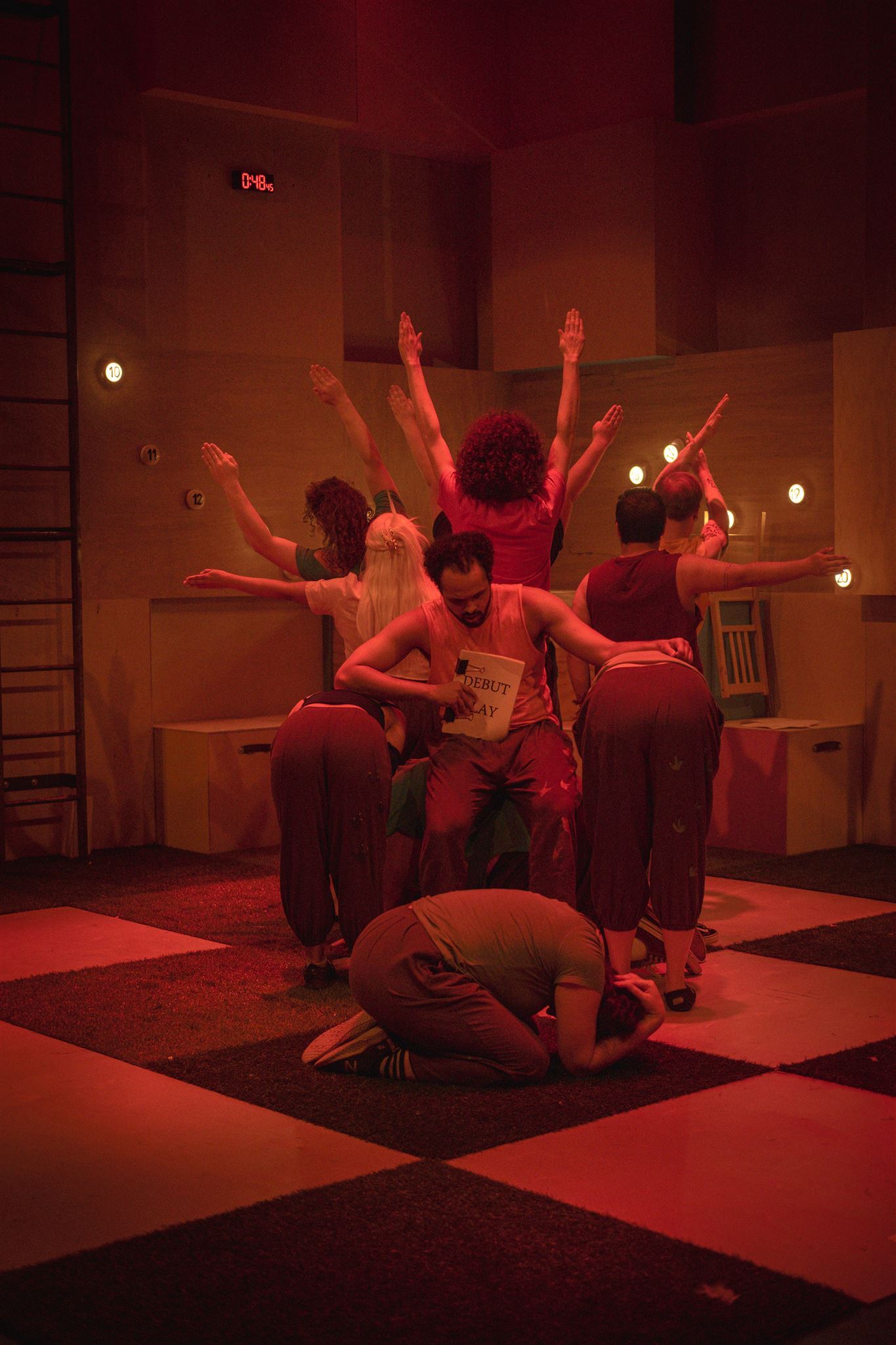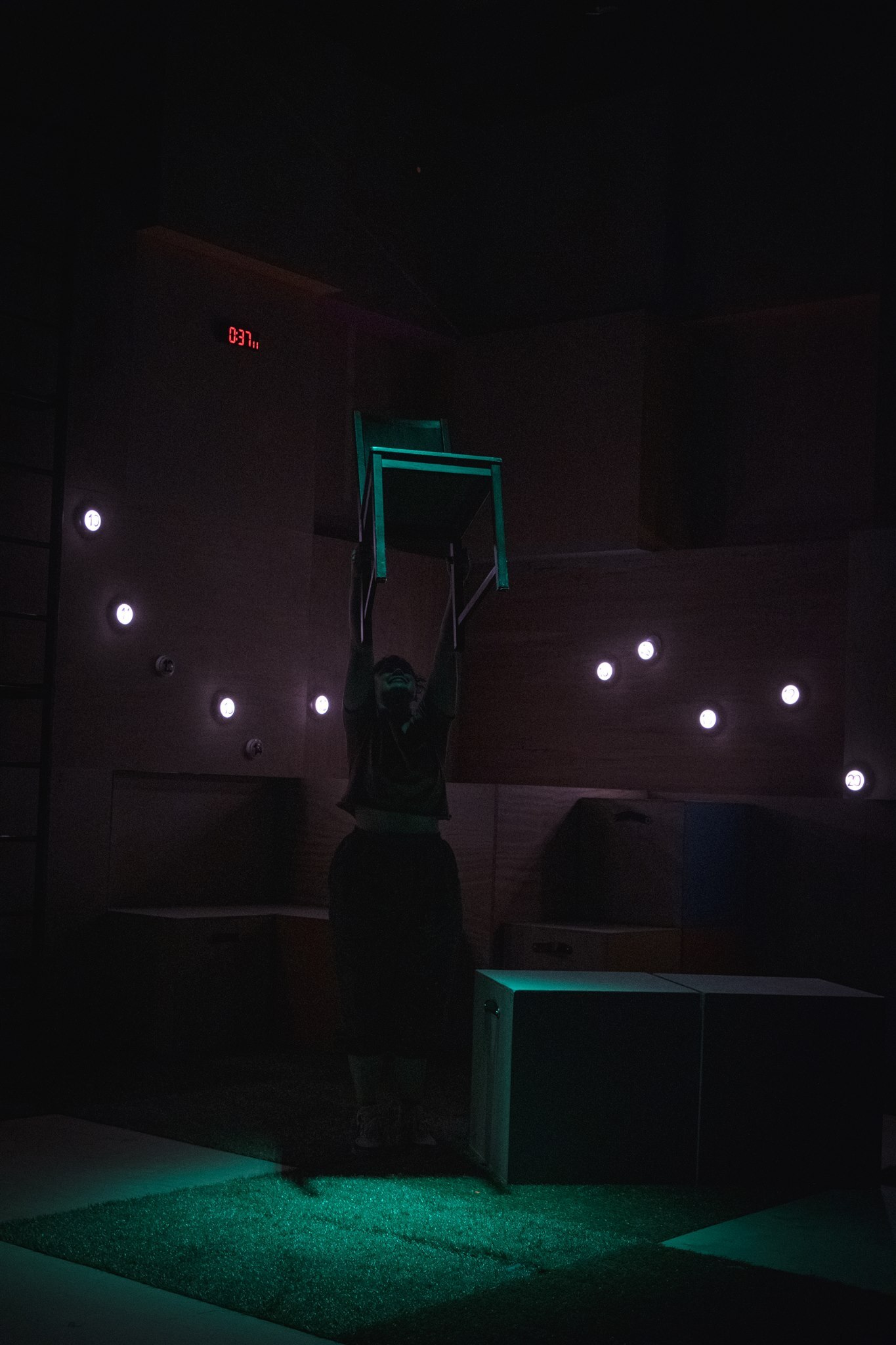Honk If You’re Horny!
A Review of SCRAMBLING THE GOOSE at WASHINGTON ENSEMBLE THEATRE
Written by TeenTix Newsroom Writer CALLAGHAN CROOK and edited by Teen Editorial Staff Member ANNA MELOMED

When you read the word “theater,” what do you picture? A raised stage with red curtains and footlights? Dramatic dialogue spoken from behind the fourth wall? Silence from the audience broken only by appropriate laughter and polite applause?
Well, if that sounds boring to you, welcome to Scrambling the Goose! Washington Ensemble Theatre’s newest show, which ran at 12th Avenue Arts from April 26 to May 17, challenges conventional boundaries of theater, not only by showcasing a wide variety of mediums and genres, but also by incorporating the audience as a crucial part of the show.
The audience is thrust headlong into the world of Scrambling the Goose as soon as we enter the theater: ensemble members stroll across the stage, hawking “mostly popped popcorn” and “slightly warm Rainiers,” while twangy music from the live banjo jukebox competes with finished order announcements from the custom poems table. The ensemble commits to absurdity a hundred and ten percent, inviting us to leave our real lives at the door and come in bare.
When the carnival closes, the lights go down, and there’s no time to sit back and relax—the show is starting and the ensemble needs us! Everyone has a laminated “menu” with a list of 30 short theater pieces. The ensemble will perform all of the pieces in exactly 90 minutes, in a random order chosen by the audience. Whenever an ensemble member says the word “goose!” everyone yells the number of the piece they want to see next. The number heard first (or the one being yelled the loudest) is performed next.

The atmosphere the show creates is incredible. Not only does the audience contribute to building the show, but many of the pieces are games played with the audience. In one titled “Honk!”, for example, an ensemble member holds up cue cards with instructions to honk (yes, like a goose) if the written statement applies to us. The self-conscious giggles as people admit to being horny, and the moment of silence as they acknowledge waking up every morning thinking of Palestine, establish a group consciousness that only comes from collective vulnerability. In that theater we embrace art and wackiness because there is nowhere to be but there, and no one to be but us. We are no longer in Seattle and tomorrow doesn’t exist, so there is no reason not to laugh and cry and trust the strangers around us.
The ensemble simultaneously offers us belonging and delights in making us uncomfortable. An interpretive dance reflects on the challenges of COVID lockdowns and invites us to meditate together about what we grieve from before the pandemic. Later on (or earlier, depending on the night), another piece begins with an ensemble member greeting the majority White audience as “fellow Black people,” generating the awkward, vulnerable chuckles that happen when people aren’t sure if they’re allowed to laugh.

Scrambling the Goose moves seamlessly between utter silliness, crude humor, sorrow, grief, deep thought, and political resonance. Despite the seeming disparity between many of the themes and mediums, none feel out of place, because the overarching point of the show is simply to tell honest stories in creative ways. Thus, a goose-themed drag act, a piece illustrating gender dysphoria, mimed self-stimulation, and a dance reflecting on toxic families all belong.
Additionally, it strikes a delicious balance between the spontaneity and vulnerability of improv paired with the tight humor and emotional gut punches of scripted theater. Wii music plays during transitions as the backstage curtain pulls back, revealing the cheery chaos of costume changes. The ensemble distracts the audience with whatever pops into their heads as they try to remember how to reset the stage, and then on “go!” they slip seamlessly into character, expressing carefully crafted emotional arcs and well-timed punchlines.
The show moves at a breakneck pace, with no intermission and each piece lasting only 2-5 minutes. While the energy and excitement are through the roof, sometimes the pieces move so fast that I feel like I don’t have time to understand them, or they switch so quickly that I don’t have time to sit and reflect on them before something else starts.
I left 12th Avenue Arts that night filled with energy. I wanted to dance and laugh, make art and have conversations. Good art makes you think, and if it also makes you smile, I think that’s even better. Scrambling the Goose accomplishes both of those things by embracing truthful storytelling, using a vast variety of mediums, and building a community with its audience.
Lead Photo Credit: courtesy of The Evergreen Girls @evergreengirls.co
The TeenTix Newsroom is a group of teen writers led by the Teen Editorial Staff. For each review, Newsroom writers work individually with a teen editor to polish their writing for publication. The Teen Editorial Staff is made up of 5 teens who curate the review portion of the TeenTix blog. More information about the Teen Editorial Staff can be found HERE.
The TeenTix Press Corps promotes critical thinking, communication, and information literacy through criticism and journalism practice for teens. For more information about the Press Corps program see HERE.

